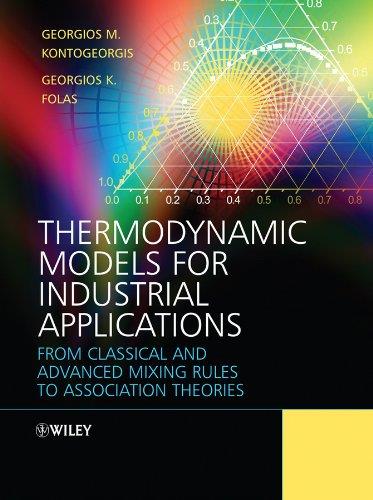Thermodynamic Models for Industrial Applications: From Classical and Advanced Mixing Rules to Association Theories By Georgios M. Kontogeorgis, Georgios K. Folas(auth.)
2010 | 696 Pages | ISBN: 0470697261 | PDF | 18 MB
2010 | 696 Pages | ISBN: 0470697261 | PDF | 18 MB
Using an applications perspective Thermodynamic Models for Industrial Applications provides a unified framework for the development of various thermodynamic models, ranging from the classical models to some of the most advanced ones. Among these are the Cubic Plus Association Equation of State (CPA EoS) and the Perturbed Chain Statistical Association Fluid Theory (PC-SAFT). These two advanced models are already in widespread use in industry and academia, especially within the oil and gas, chemical and polymer industries. Presenting both classical models such as the Cubic Equations of State and more advanced models such as the CPA, this book provides the critical starting point for choosing the most appropriate calculation method for accurate process simulations. Written by two of the developers of these models, Thermodynamic Models for Industrial Applications emphasizes model selection and model development and includes a useful “which model for which application” guide. It also covers industrial requirements as well as discusses the challenges of thermodynamics in the 21st Century.Content: Chapter 1 Thermodynamics for Process and Product Design (pages 1–15): Chapter 2 Intermolecular Forces and Thermodynamic Models (pages 17–37): Chapter 3 Cubic Equations of State: The Classical Mixing Rules (pages 39–77): Chapter 4 Activity Coefficient Models Part 1: Random?Mixing Models (pages 79–107): Chapter 5 Activity Coefficient Models Part 2: Local Composition Models, from Wilson and NRTL to UNIQUAC and UNIFAC (pages 109–157): Chapter 6 The EoS/GE Mixing Rules for Cubic Equations of State (pages 159–193): Chapter 7 Association Theories and Models: The Role of Spectroscopy (pages 195–219): Chapter 8 The Statistical Associating Fluid Theory (SAFT) (pages 221–259): Chapter 9 The Cubic?Plus?Association Equation of State (pages 261–297): Chapter 10 Applications of CPA to the Oil and Gas Industry (pages 299–331): Chapter 11 Applications of CPA to Chemical Industries (pages 333–367): Chapter 12 Extension of CPA and SAFT to New Systems: Worked Examples and Guidelines (pages 369–388): Chapter 13 Applications of SAFT to Polar and Associating Mixtures (pages 389–427): Chapter 14 Application of SAFT to Polymers (pages 429–459): Chapter 15 Models for Electrolyte Systems (pages 461–523): Chapter 16 Quantum Chemistry in Engineering Thermodynamics (pages 525–549): Chapter 17 Environmental Thermodynamics (pages 551–575): Chapter 18 Thermodynamics and Colloid and Surface Chemistry (pages 577–611): Chapter 19 Thermodynamics for Biotechnology (pages 613–654): Chapter 20 Epilogue: Thermodynamic Challenges in the Twenty?First Century (pages 655–663):



